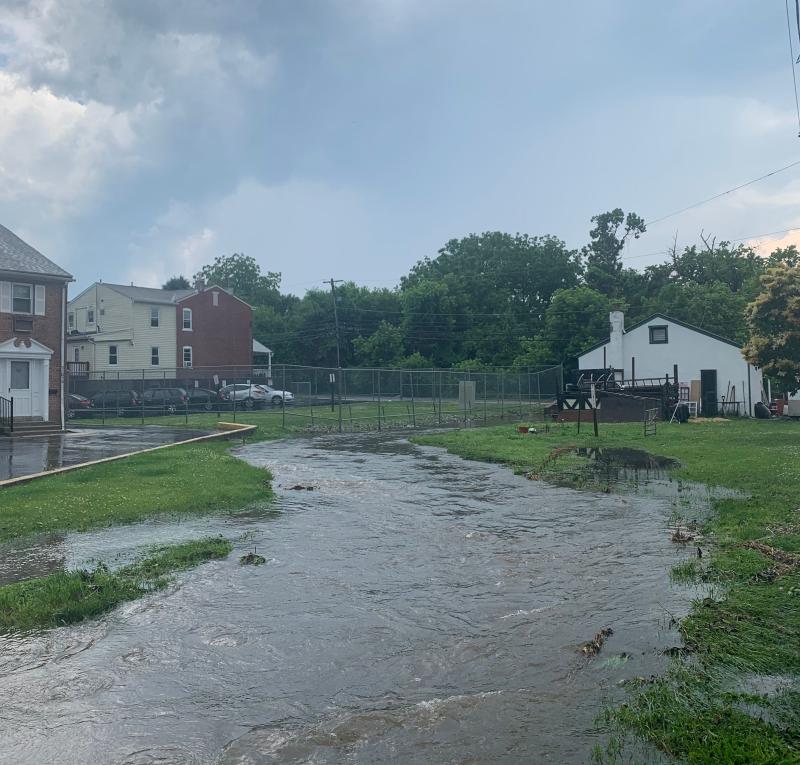
Current Conditions
Abnormal Flow
Abnormal flow refers to changes in river or stream volume caused by manmade interventions of waterways. In Goose Creek, it is caused by the increased amount of impervious surfaces, the removal of watershed vegetation, and the frequency of 100-year storms. this abnormal flow causes the low holding capacity of Goose Creek (how much water the creek can hold) and leads to flooding in West Chester, Westtown, and West Goshen. It also increases the sediment, nutrients, and pollutants in the waterway.
Degraded Habitat
"Degraded aquatic habitat (habitat alterations) occurs when naturally occurring stream channels are changed or diverted through man-made channels and/or removal of native vegetation from the shorelines and stream banks. These actions can reduce the habitat that fish and other animals need to reproduce, feed, and find shelter, and can also affect the appearance and value of waterfront property."


Bacteria and other Microbes
"Bacteria and other microbes (pathogens) are potentially disease-causing organisms from human or animal waste that enter the water from faulty septic systems, sewage discharge, farm and feedlot manure runoff, boat discharges, and pet waste. People can become ill by eating contaminated fish, shellfish or swimming in waters with high levels of these microbes."
Sediment
"Sediment is a problem when rain washes soil into waterways from fields, construction sites, yards, logging areas, city streets, and other areas. Sediment can make the water murky, hurt the health and habitats of fish and other aquatic animals, interfere with uses like fishing and swimming, and carry other pollutants."
Low Oxygen
"Low Oxygen (oxygen depletion) levels in water can occur naturally for short periods, but when they are extreme or long-lasting, they can sicken and even kill fish and other aquatic life. Sewage wastewater, leaking septic tanks, farm and feedlot runoff, and stormwater runoff contain organic materials that decompose and use up oxygen in the water. High water temperatures can lead to lower oxygen levels."
